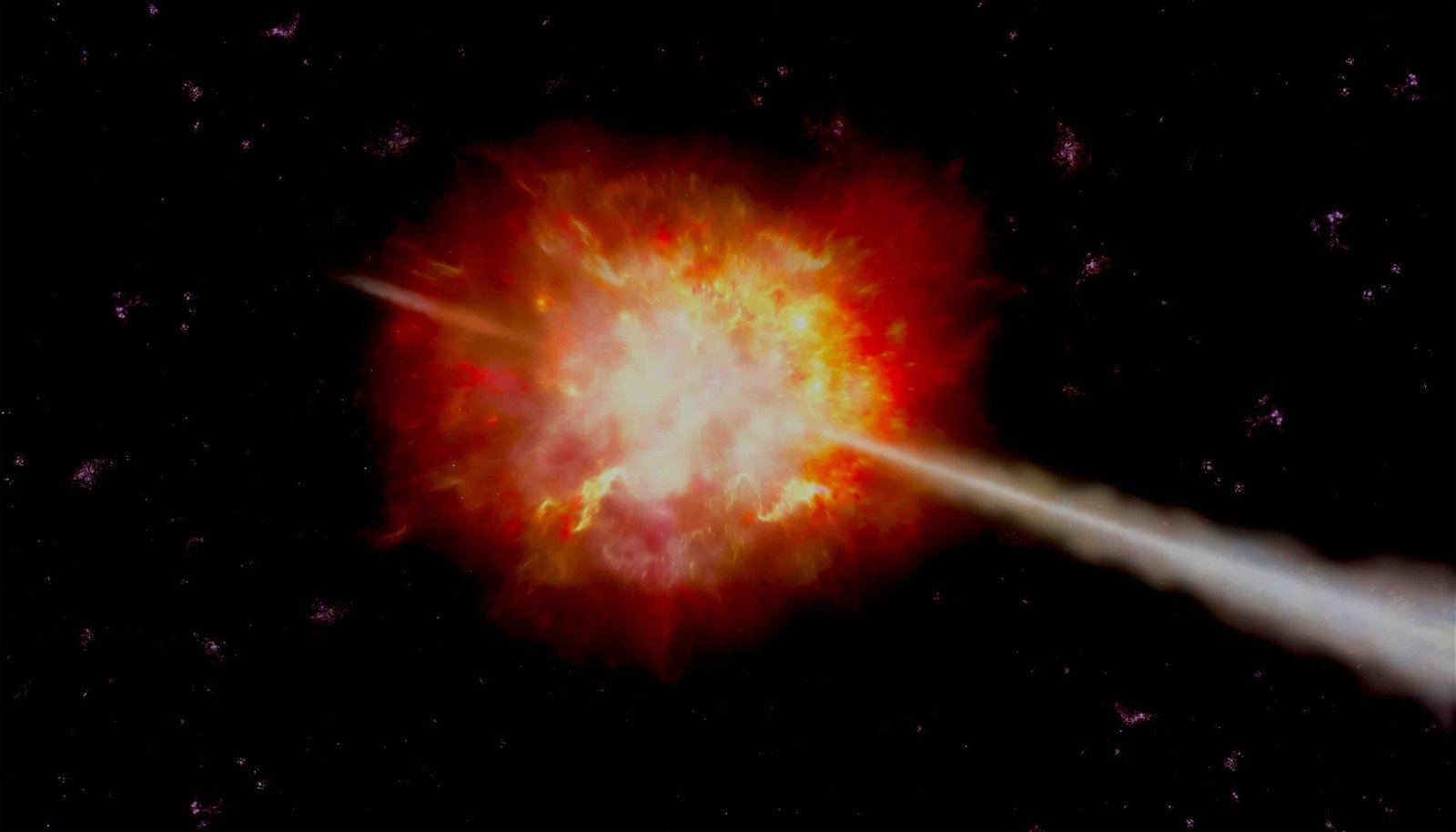On October 9, 2022, an unusually powerful gamma-ray burst (GRB) possessing a prolonged visible afterglow was observed by a team of researchers, which may have been the most violent cosmic event ever detected by astronomers.
Unlike anything they had previously witnessed, the burst, designated GRB 221009A, was judged to have been “the brightest GRB ever detected in nearly 55 years of operating gamma-ray observatories.” The curious burst, likely produced by the collapse of a huge star into a black hole, was dubbed “brightest-of-all-time” (BOAT) by the team, who said it was so powerful that its reach even disturbed Earth’s ionosphere with the massive amounts of high-energy radiation it produced.
Now, additional studies reveal that GRB 221009A’s prolonged afterglow could point to oddities in its structure that may upend what astronomers have long theorized about gamma-ray bursts.
The most powerful explosions that occur anywhere in the known universe, gamma-ray bursts are able to produce as much energy when they are released as a star like our Sun will produce over the entire course of its lifetime.
According to a new paper by the collaboration of researchers involved with the discovery that recently appeared in Science Advances, data obtained during the observation of GRB 221009A shows that its massive jet possessed a very unusual structure, which included a narrow core and “wings” with wide sloping edges.
The unusual structure of the jet of energy produced by GRB 221009A makes it distinct from the jets normally produced by gamma-ray bursts, leading the researchers to believe that this could be the reason for the prolonged afterglow it produced, which lingered like an eerie cosmic ghost for months after the explosion occurred.
In their paper, the team writes that means by which the suppression of gamma-ray emissions may occur during such highly energetic events could cause some observers not to detect the immediate gamma-ray burst emissions and instead “possibly identify such an event as an ‘orphan’ afterglow” the likes of which was observed for months after the burst associated with GRB 221009A.
“This may lead to a population of luminous orphan afterglows,” the team writes, “which could be searched for in various transient surveys.”
The observations, made primarily with the powerful twin 8.1-meter diameter optical/infrared telescopes located at Gemini Observatory in Chile, represent “a massive step forward in our understanding of gamma-ray bursts,” according to Brendan O’Connor, the study’s lead study author.
O’Connor says his team’s observations of the massive explosion associated with GRB 221009A “demonstrates that the most extreme explosions do not obey the standard physics assumed for garden variety gamma-ray bursts.”
O’Connor likened GRB 221009A to the famous Rosetta stone, saying that information he and his team have determined about the violent cosmic event may force astronomers “to revise our standard theories of how relativistic outflows are formed in collapsing massive stars.”
Alexander van der Horst, one of the study’s co-authors and an associate professor at George Washington University, says that previous thinking about gamma-ray jets likened their shapes to ice cream cones, but that more recent observations continue to challenge this long-accepted presumption.
In a statement, van der Horst added that the team’s work helps demonstrate “that we need more complex models and detailed computer simulations of gamma-ray burst jets.”
The team’s paper, “A structured jet explains the extreme GRB 221009A,” recently appeared in Science Advances and can be read online.
Micah Hanks is the Editor-in-Chief and Co-Founder of The Debrief. He can be reached by email at micah@thedebrief.org. Follow his work at micahhanks.com and on Twitter: @MicahHanks.

